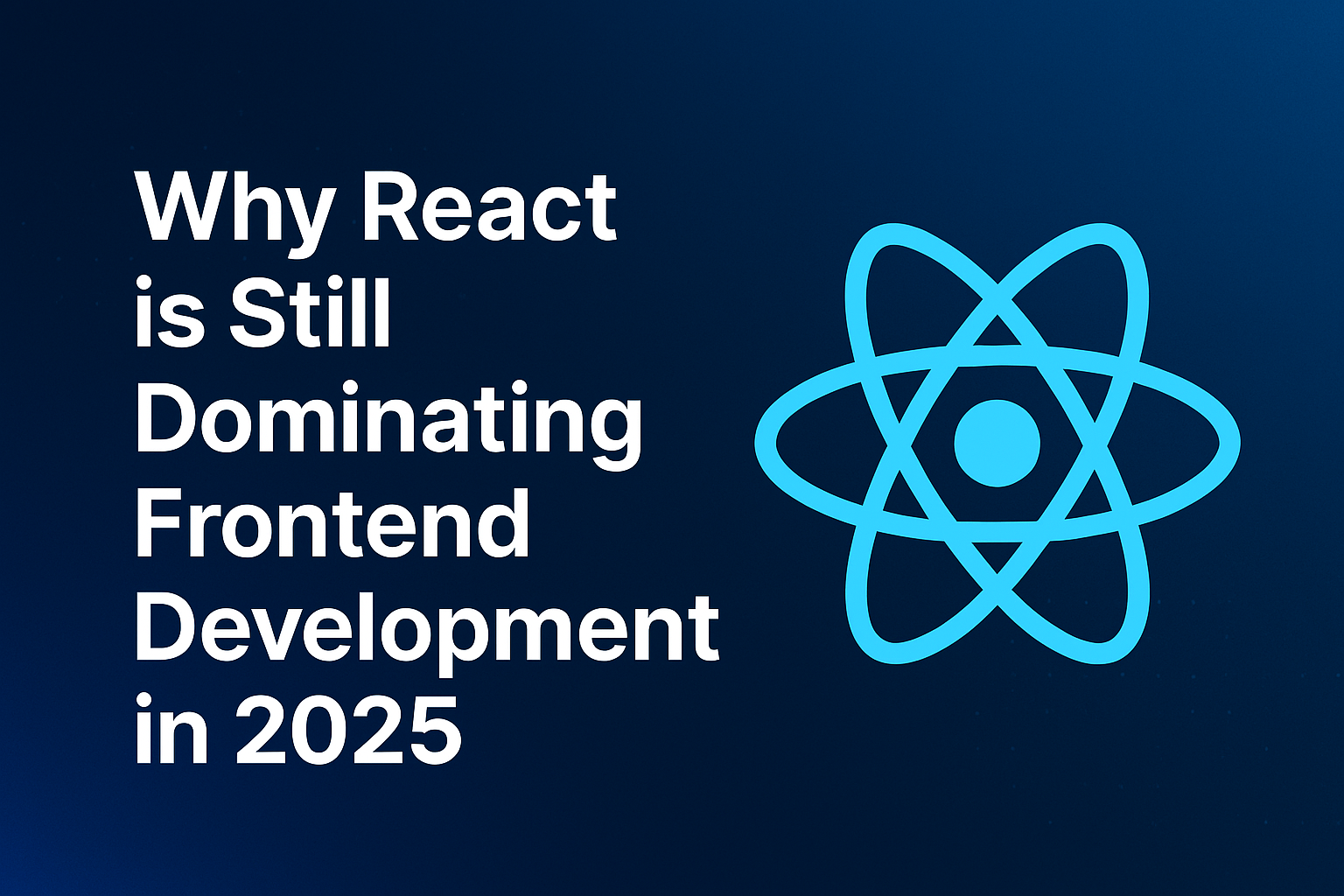Introduction
Why React is Still Dominating Frontend Development in 2025. In the ever-evolving world of web development, frameworks and libraries come and go. But one name that has consistently stood the test of time is React. Originally developed by Facebook in 2013, React has now been around for over a decade and still remains a dominant force in frontend development in 2025. Whether it’s building single-page applications, mobile apps, or even full-scale enterprise platforms, developers continue to choose React — and for good reason.
This blog explores why React continues to dominate the frontend development space, even with the rise of other powerful tools like Vue, Svelte, and SolidJS.
Table of Contents
1. Strong Community and Ecosystem
React boasts one of the largest and most active communities in web development. This ecosystem includes vast resources for learning, a wide variety of open-source libraries, third-party tools, and active contributions from developers around the world. Platforms like GitHub, Stack Overflow, and Reddit are flooded with solutions to common React issues, making troubleshooting easier and quicker.
Examples:
- React Docs – continuously updated and beginner-friendly.
- Awesome React – a curated list of React resources.
React’s huge ecosystem ensures that no developer ever feels stuck.
2. Backed by Industry Giants
Being backed by Meta (formerly Facebook), React has the support of a tech giant that’s deeply invested in maintaining its quality, performance, and relevance. Meta itself uses React in its core products like Facebook, Instagram, and WhatsApp Web.
Beyond Meta, companies like Netflix, Airbnb, Uber, and Shopify use React extensively, further validating its strength and versatility.
3. Performance and Virtual DOM
React’s use of the Virtual DOM offers noticeable performance advantages. Instead of re-rendering the entire UI, React only updates the parts of the DOM that actually changed. This diffing algorithm makes React highly efficient, especially for large-scale applications where DOM manipulation could otherwise be a bottleneck.
Thanks to advancements like React Fiber and Concurrent Rendering, React is more performant than ever before in 2025.
4. Component-Based Architecture
One of React’s key strengths is its component-based architecture. Developers can break down the UI into small, reusable components that manage their own state and logic. This leads to cleaner code, easier debugging, and faster development.
With the increasing complexity of modern web applications, having a scalable architecture like React’s makes it a go-to choice for teams.
5. React Hooks and Functional Programming
React’s shift from class-based components to functional components and Hooks (introduced in React 16.8) marked a huge leap in its evolution. Hooks like useState, useEffect, and useContext simplify state and side-effect management, making code cleaner and more maintainable.
In 2025, Hooks are the standard, and most third-party libraries have adapted to support them. This has made React development faster and more intuitive.
6. React Native for Mobile Development
Another reason React continues to dominate is its cross-platform capability through React Native. Developers can use React to build both web and native mobile apps using the same language and architecture.
This ability to write once and deploy anywhere reduces development time and cost, which is a massive benefit for startups and enterprises alike.
7. Tooling and Developer Experience
React comes with a powerful set of developer tools that enhance productivity and debugging. Tools like React Developer Tools for Chrome/Firefox and frameworks like Next.js (for SSR and static site generation) or Vite (for blazing fast development) make the experience smooth and modern.
Additionally, TypeScript support in React has matured significantly, making large-scale applications safer and easier to maintain.
8. Continuous Innovation
React’s core team and its community are always pushing boundaries. Features like Concurrent Mode, Suspense, Server Components, and Streaming SSR are redefining how we think about frontend performance and user experience.
Even as other libraries innovate, React remains ahead or on par by consistently integrating new features without breaking the existing ecosystem.
9. Hiring and Developer Pool
Due to its popularity, there is a vast pool of React developers available. This makes it easier for companies to hire, onboard, and scale their teams quickly. Developers also prefer learning React due to its high demand in the job market.
React skills continue to be a highlight on resumes and a key requirement in job listings across tech hubs worldwide.
10. Community Events and Learning Resources
With global conferences like React Conf, countless YouTube channels, courses on platforms like Udemy and freeCodeCamp, React learning has never been easier. This ongoing support ensures that both beginners and experienced developers have continuous access to quality content.
Conclusion
As we move deeper into 2025, React shows no signs of slowing down. Its component-based design, powerful performance optimizations, and massive community support make it a long-standing favorite among developers and companies alike.
While new technologies like Svelte and SolidJS continue to gain attention, React’s robustness, maturity, and adaptability keep it at the top of the frontend development world.
If you’re a developer looking to invest in a frontend technology with proven longevity and versatility, React is still one of the best choices you can make.
Ready to build your next app with React? Dive in and join millions of developers shaping the future of the web.
Find more React content at: https://allinsightlab.com/category/software-development

